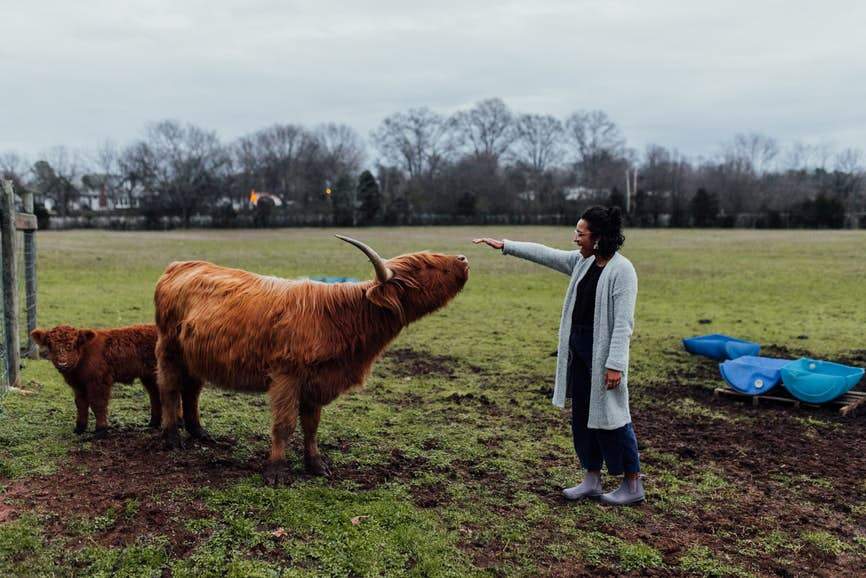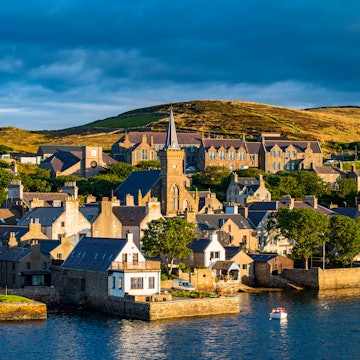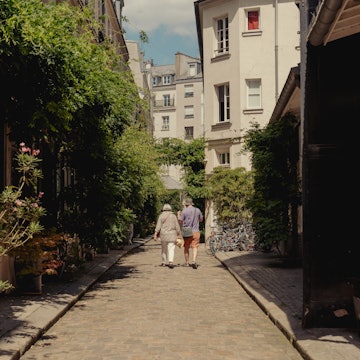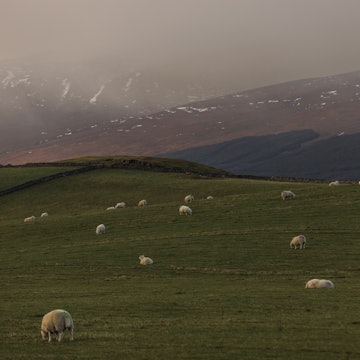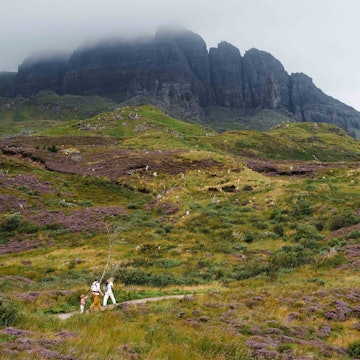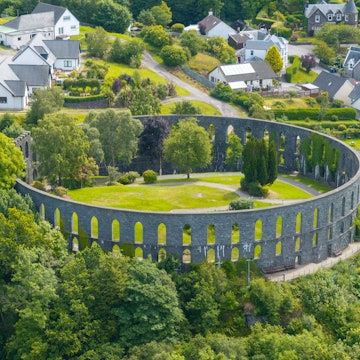
The Lonely Planet guide to Neolithic Orkney, Scotland

May 15, 2025 • 9 min read

Skara Brae is the most famous site in the Neolithic Heart of Orkney group. Jimmy Dunn/Getty Images
Buffeted by North Atlantic winds, the scattered islands of Orkney are rich in history, showcasing an ancient culture forged by Iron Age and Bronze Age tribes, Viking marauders and the prehistoric peoples of Neolithic Orkney. While Scotland's western islands are steeped in Gaelic culture, in Orkney, place names and customs have a distinctive Norse twang – befitting a group of islands that was ruled from Norway until the 13th century.
Experiencing Orkney’s densely layered history is an undisputed highlight of any trip to Scotland’s Highlands and Islands. As you wander across this windswept landscape, ancient tombs, stone circles and the ruins of Neolithic villages and Iron Age brochs (defensive towers) stud the hillsides. Indeed, it’s hard to wander more than a few meters without stumbling across another piece of ancient history.
The Neolithic village of Skara Brae, buried by Atlantic storms in around 2500 BCE and uncovered by powerful storms in 1850, is just the beginning. Mainland – Orkney’s largest island and the location of the capital, Kirkwall – is littered with ancient relics, from stone circles to ruined medieval mansions.
Along with the chambered tomb of Maeshowe and the standing stones that form the Ring of Brodgar and the Stones of Stenness, Skara Brae is inscribed on the UNESCO World Heritage list as part of the “Heart of Neolithic Orkney” – a must-visit for anyone interested in Scottish history.
Here’s our guide to exploring Scotland’s best collection of ancient sites.
What’s the history of ancient Orkney?
Long before the arrival of Viking raiders and Scottish lairds (noble landowners), Orkney was home to thriving communities of fisherfolk and farmers, who moved to the islands as early as 6500 BCE. But Orkney's heyday came between 3500 BCE and 2500 BCE, when the islands’ Neolithic inhabitants constructed stone-walled houses and ceremonial stone circles across the grassy hills of Mainland and surrounding islands.
One of the best-preserved Neolithic settlements in Europe, Skara Brae was choked by sand in around 2500 BCE, but later Bronze and Iron Age peoples added to the islands’ collection of ancient monuments, building stone roundhouses and brochs – drystone towers that still loom over the landscape today. In the early medieval period, Jarls (Norse earls) added their own monuments, such as Kirkwall’s imposing St Magnus Cathedral.

When should I explore Neolithic Orkney?
The best time to visit Orkney matches the best time to visit the rest of Scotland. The islands are chilly and bleak in winter, but temperatures are mild in summer, and strong winds act as a deterrent to the midges that throng other parts of the country from June to August.
However, the peak summer months are also the busiest. Orkney’s Neolithic sites are more evocative – and easier to visualize in their original glory – when the crowds are smaller in spring and fall. At any time of year, bring rainproofs and waterproof footwear; marshy ground is a fact of life in Orkney.
How much time should I spend exploring Neolithic Orkney?
Mainland Orkney measures just 26 miles (41kms) by 25 miles (40kms), so it’s easy to explore the island in just a few days by hire car or bicycle, or a combination of local buses and walking. Basing yourself in Kirkwall or Stromness, you can fit most of Mainland’s ancient sights into two or three days of leisurely sightseeing.
What’s the best way to see Neolithic Orkney?
Ferries run from the Scottish mainland to Kirkwall and Stromness, and Kirkwall is also served by Loganair flights from cities across the UK, so getting here is easy. Hire a car or rent a bike from Cycle Orkney in Kirkwall or Orkney Cycle Hire in Stromness to explore. Check online for details of local bus services.
Devote a morning to Skara Brae and the nearby sea cliffs at Yesnaby, and the same afternoon to the standing stones at Stennes and the Ring of Brodgar. Take a second day to explore Maeshowe and the Broch of Gurness, setting aside time for a bracing coastal walk, before exploring Kirkwall’s sights on day three.
How much do tickets cost?
Skara Brae, Maeshowe, the Broch of Gurnes, the Stenness and Brodgar standing stones and other historic sights here are administered by Historic Environment Scotland. Entry fees range from £7.50 to £16 (US$10 to US$21) but the standing stones can be visited for free.
An annual Historic Environment Scotland membership is worth considering if you plan to visit lots of other historic sites in Scotland.
Entry to Skara Brae and Maeshowe should be booked online as far ahead as possible; Maeshowe tours can sell out up to three weeks in advance in July and August.
What can I eat and drink while exploring?
With a hire car or bike, it’s easy to reach good places to eat near the sights. Skara Brae has an inviting cafe, or you can pop up to Birsay and dine at the Birsay Bay Tearoom – a pleasant spot with sweeping views.
Alternatively, head over to Stromness; try the Ferry Inn or Stromness Hotel, or drop into the tasting hall at the Orkney Brewery at Quoyloo for a meal and a pint. In Kirkwall, try the Storehouse, cozy Helgi’s pub or the Lynnfield Hotel, specializing in Orcadian food.

What are ancient Orkney’s must-sees?
Mainland Orkney’s most important ancient sights are clustered on the western half of the island, west of Kirkwall and north of Stromness.
Skara Brae
Northern Europe’s best-preserved Neolithic village, and one of the world’s most evocative prehistoric sites, Skara Brae offers the unique opportunity to take a peek at everyday Stone Age life. Few sights anywhere conjure up such a vivid sense of the past.
Built around 3500 BCE, predating Stonehenge and the Pyramids of Giza, Skara Brae is idyllically situated by a sandy bay about 8 miles (12.8km) north of Stromness. This remarkable site was hidden under the sand dunes until 1850, when a storm eroded the sand and grass above the beach, exposing the stone huts beneath.
The site’s round stone houses are in an incredible state of preservation, particularly House No 7, which has been roofed over to protect the interior from the elements (you can explore a detailed replica at the adjacent visitor centre).
Even the stone furniture – box beds, fireplaces and storage dressers – has survived intact for over 5000 years. Within the buildings, archaeologists discovered carved jewelry, stone tools, bone pots and even primitive dice from ancient games, now on display in the visitor centre. While you’re here, pop south along the coast to the eroded sea cliffs at Yesnaby for stirring sea views.

Ring of Brodgar
This atmospheric ring of standing stones, some standing over 5m (16.4ft) tall, sits between Skara Brae and Maeshowe. Twenty-one of the original 60 stones still stand among the heather, gnarled by millennia of Scottish weather. These mysterious giants inspire many questions, and archaeologists are still debating their purpose. Guided walks (free; no booking needed) leave from the car park at 1pm daily from May to September.
Twenty years of archaeological digs at the nearby Ness of Brodgar site, between the Ring of Brodgar and the Stones of Stenness, concluded in 2024. Spectacular finds here have revealed that the Heart of Neolithic Orkney sites were even more significant than previously believed. This complex of Neolithic structures may have served as a destination for ancient pilgrimages, comparable to Stonehenge.
Stones of Stenness
Mainland's other famous stone circle lies a 20-minute walk southeast from the Ring of Brodgar, within sight of Maeshowe. Four crude rock pillars are all that remains of what was once a circle of 12 tall standing stones, the tallest measuring 5.7m (18.7ft) in height. Recent research suggests the Stones of Stenness were erected as long ago as 3300 BCE. A short walk to the east are the excavated remains of Barnhouse Neolithic Village, thought to have been inhabited by the builders of Maeshowe.
Maeshowe Chambered Cairn
Constructed about 5000 years ago, Maeshowe is the finest chambered tomb in Western Europe, an extraordinary structure built from enormous sandstone blocks. From the outside, the grass-covered mound looks unremarkable, but as you crawl along the stone passageway into the main chamber, you’ll begin to sense the yawning gulf of time that separates the modern age from the architects of this mysterious place.
It’s not known how many people were originally buried in this vast chamber, stretching over 6.7m (22ft) high and 3.5m (11.5ft) wide. What is known is that Vikings returning from the Crusades broke into the tomb in the 12th century, searching for treasure. They found none but left a wonderfully earthy collection of graffiti carved in runes on the tomb’s walls, including such profound messages from the past as “Thorni bedded Helgi.”
At the time of the winter solstice, the setting sun shines along the entrance passage at Maeshowe and strikes the back wall of the tomb in a spooky alignment. If you can’t be here to see it in person, you can watch the spectacle online.

Broch of Gurness
You can continue the journey through history beyond the Neolithic Heart of Orkney sights. On an exposed headland at Aikerness, near Evie on the coast north of Maeshowe, lies the Broch of Gurness – a fine example of the fortified towers that were both a status symbol and a means of protection for island communities some 2200 years ago.
The sturdy stone walls of this Iron Age structure originally stood 10m (33ft) high, and inside, you can see the original hearth and the point where a mezzanine floor was once located. Around the broch are a number of well-preserved outbuildings, including a curious shamrock-shaped house. The visitor centre has some interesting displays on the culture that built these remarkable fortifications.
Earl’s Palace & Brough of Birsay
About 6 miles (9.65km) north of Skara Brae are the ruins of the Earl’s Palace, built in 1606 by the tyrant Patrick Stewart. At low tide (check tide times online), you can walk out to the Brough of Birsay, a windswept island with extensive Viking ruins, including several longhouses and the 12th-century St Peter’s Church. There’s also a replica of a Pictish stone that was found here, carved with an eagle and human figures (the original is in the Orkney Museum).
Orkney Museum & Cathedral
Head to Kirkwall to place these ancient sites into context at the Orkney Museum. The collection includes a treasure trove of artefacts from 5000 years of island life. Look out for the exhibit on the Viking boat burial at Scar on the isle of Sanday and the many fascinating finds from the islands’ Neolithic sites.
Just opposite, the imposing St Magnus Cathedral was founded in 1137 by the Norse jarls of Orkney, and constructed from decorative red and yellow sandstone. Inside, the cathedral walls are lined with gravestones carved with skulls and crossbones and other symbols of mortality – among the best-preserved medieval grave slabs in Scotland.
Is ancient Orkney accessible?
Historic Environment Scotland is working to make these ancient sites more accessible, and visitor centers have ramps and other modifications. Wheelchair users and visitors with limited mobility can navigate around the exterior of many ancient structures, but paths can be rough and muddy and entering many structures involves crossing uneven surfaces or squeezing through narrow passageways. Maeshowe in particular is not suitable for wheelchair users.
This article was adapted from Lonely Planet’s Scottish Highlands & Islands guidebook, published in June 2025.





